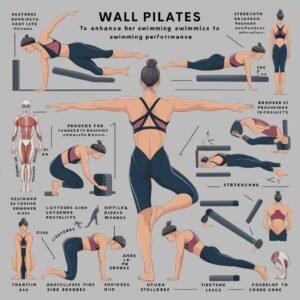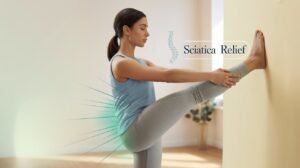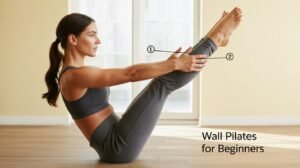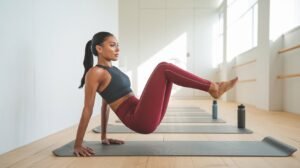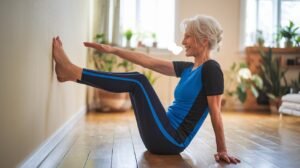Swimming is not just a sport; it’s a symphony of motion where strength, flexibility, and technique harmonize to propel athletes through the water. For swimmers, maintaining peak physical condition and honing specific muscle groups are crucial for achieving a competitive edge and preventing injuries. Enter Wall Pilates for Swimmers —a specialized form of exercise designed to target core strength, improve posture, and enhance overall performance in the water.
Understanding Wall Pilates
Wall Pilates is a dynamic fusion of Pilates principles and exercises performed using a wall as a prop for added stability and resistance. It blends the core-strengthening benefits of traditional Pilates with the vertical support of the wall, allowing swimmers to engage in a variety of movements that mimic and enhance swimming motions.

Benefits for Swimmers
1. Core Strength and Stability
A strong core is the cornerstone of efficient swimming technique. Wall Pilates exercises focus on developing core muscles such as the abdominals, obliques, and lower back. These muscles provide stability and control during strokes, enabling swimmers to maintain proper body alignment and reduce drag in the water.
2. Improved Posture
Correct posture plays a pivotal role in swimming performance. Wall Pilates promotes alignment of the spine and shoulders, which is essential for reducing strain and optimizing the efficiency of arm and leg movements. Better posture not only enhances stroke mechanics but also minimizes the risk of overuse injuries.
3. Enhanced Flexibility
Flexibility is crucial for swimmers to achieve optimal range of motion in their joints. Wall Pilates incorporates stretches that target tight muscles, particularly in the shoulders, hips, and legs. Increased flexibility translates to smoother, more fluid movements in the water and helps swimmers reach farther with each stroke.
4. Specific Muscle Targeting
Different strokes in swimming require specific muscle groups to work in coordination. Wall Pilates exercises can be tailored to target these muscles, such as the deltoids and latissimus dorsi for freestyle, the quadriceps and glutes for breaststroke, or the triceps and core for butterfly. By isolating and strengthening these muscles, swimmers can improve stroke power and endurance.
5. Injury Prevention
Swimming involves repetitive movements that can lead to muscle imbalances and overuse injuries. Wall Pilates helps swimmers address these imbalances by strengthening weaker muscles and promoting overall body symmetry. The controlled movements and focus on alignment also reduce the risk of strains and sprains.
Incorporating Wall Pilates into Training
Integrating Wall Pilates into a swimmer’s training regimen can be highly beneficial. Ideally, sessions should be supervised by a qualified instructor who understands both Pilates principles and the biomechanics of swimming. Here’s how swimmers can get started:
- Consultation: Begin with a consultation to assess individual fitness levels, goals, and any specific areas of concern.
- Customized Program: Develop a personalized Wall Pilates program that targets weaknesses and complements swimming training.
- Progressive Approach: Gradually increase the intensity and complexity of exercises to challenge muscles and promote continuous improvement.
- Consistency: Incorporate Wall Pilates sessions regularly—ideally 2-3 times per week—to see lasting benefits in strength, flexibility, and performance.
Conclusion
Wall Pilates offers swimmers a holistic approach to enhancing their performance in the water. By focusing on core strength, posture, flexibility, and specific muscle targeting, this specialized form of exercise can help swimmers achieve greater efficiency, endurance, and resilience. Whether you’re a competitive swimmer or a recreational enthusiast, integrating Wall Pilates into your training routine can propel you towards your goals and unlock your full potential in the pool. Embrace the power of Wall Pilates and dive deeper into the art of swimming with confidence!

